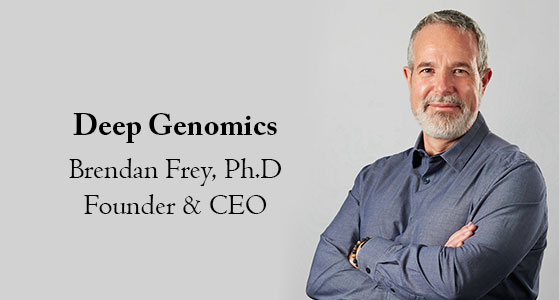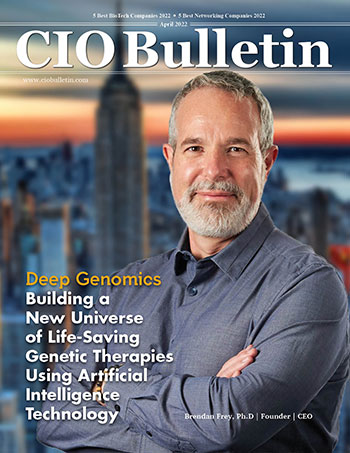CIO Bulletin

There is no longer any doubt that artificial intelligence (AI) is advancing biological discovery and biomanufacturing operations. AI-driven deep learning algorithms are being applied to monitoring and inspection activities that used to be too nuanced for true automation. Machine learning applications can update biomanufacturing processes by drawing on diverse data sources, and multiple AI models can actively interact with equipment or processes to realize the “digital twin” approach, that is, the digital emulation of physical systems. These systems provide a starting point for a true adaptive strategy. The amalgamation of AI and genomics was a thing of science fiction until a few years ago, and we just hit a milestone with CRISPR-Cas9. Although still at nascent stage, this innovation is revolutionary! It is here to stay and grow. In the future, gene technology and AI might cross paths in ways we have never imagined. Truly, the future of healthcare seems to be technology driven, an idea that once seemed far-off.
RNA as a therapeutic modality has arrived on a global scale with new medicines approved for rare disease and as vaccines. This is only the beginning. Everyone will face a genetic condition in their lifetime. And, because RNA therapies can be programmed to precisely target genetic causes, they can conceive of addressing most genetic conditions. Finding therapies requires mining RNA biology data. But, this data is vast, complex and overwhelming, making standard approaches to drug discovery too slow and costly. Deep Genomics has a solution to overcome such complex problems. Its AI Workbench untangles the complexity in RNA biology, identifies novel targets, and evaluates thousands of possibilities to identify the best therapeutic candidates. The company seeks to program therapies for any gene and any genetic condition. Deep Genomics’ Workbench is designed for data-driven prediction, positive feedback loops, and exponential growth. It enables us to identify leads for over 50 percent of the novel targets they select, and to do so quickly. This is a game changer.
AI Workbench
Deep Genomics uses its AI Workbench to rapidly discover and develop genetic medicines, and to do so with a high rate of success. They collect data on every compound identified using their platform. That includes therapeutic candidates and thousands of novel exploratory compounds. The company also collects data pertinent to biomarkers the clinical trials. All of that data is fed back into their AI system, closing the loop. They even test compounds that push the boundaries of what’s possible. This means that the platform is getting better at identifying extraordinary targets and compounds, and is doing so faster.
Steric Blocking Oligonucleotide (SBO) Therapies: The AI Workbench enables them to efficiently find drug candidates with desirable properties. The company is focusing on the development and marketing of steric blocking oligonucleotides (SBOs) that target the genetic determinants of disease at the level of RNA or DNA. These genetic diseases are mediated by altered molecular phenotypes, such as transcription, splicing, translation and protein binding. Predicting those alterations is the core competency. The oligonucleotide therapeutic design space includes tens of billions of compounds, but the platform makes it possible to search this space efficiently.
World Class Science: The platform incorporates the most advanced biological and medical knowledge, is driven by the most powerful automation technologies, and is built using proprietary as well as public datasets. Their work has appeared in Science, Nature, Nature Genetics, Nature Medicine, Nature Methods, and Proceedings of the IEEE, NIPS, Bioinformatics, RECOMB, and ISMB. When other scientists and engineers publish a discovery, they evaluate it and if appropriate rapidly incorporate it into their platform.

AI Workbench 3.0
Through iteration and positive feedback loops, prediction with AI Workbench improves and unlocks new therapeutic opportunities. The AI Workbench 1.0 focused on correcting RNA splicing as a means to restore protein expression. Deep Genomics recognized that a wide range of disorders, such as haploinsufficiencies can be potentially treated by boosting gene expression. Version 2.0 of the workbench was expanded to include seven mechanisms to increase expression and reduce the work needed to identify efficacious compounds. The company is currently developing AI Workbench 3.0 to support target identification and drug discovery for more common, complex diseases involving multiple genes. They are now advancing a pipeline of programs in a number of areas, including neurodevelopmental, neurodegenerative and metabolic.
Deep Genomics’ Approach to a Broad Portfolio in Genetic Disease
Wilson Disease: Wilson Disease is a genetic condition, which results from excessive copper in the body. Wilson Disease is caused by mutations in the ATP7B gene and more than 300 disease-causing mutations have been identified. The condition is inherited in an autosomal recessive pattern, which means individuals with Wilson Disease have disease-causing mutations in both copies of their ATP7B gene. There are three main features of Wilson Disease: liver disease, neurological decline, and neuropsychiatric symptoms. Many patients have deposits of copper in the eye, called Kayser-Fleischer rings.
Currently, there are no approved treatments available that restore ATP7B protein levels or function and address neurological symptoms. Deep Genomics is working to identify therapies that can potentially restore ATP7B protein levels and function and advance them into the clinic. These therapies may address 40% or more of patients with Wilson Disease and are aimed at potentially improving neurological symptoms as well as liver function.
Gout: Gout is a disorder caused by excessive urate production and/or insufficient urate elimination in the urine, which result in urate crystal deposition in the joints and inflammatory arthritis. In North America, gout is present in about 3% of the population. Arthritis symptoms can be treated by anti-inflammatory drugs, and urate levels can be modulated using urate synthesis inhibitors and enhancers of urate excretion. However, about 150,000 patients have treatment-refractory gout, which means that available pharmacological treatment has failed to normalize their urate levels and they have persistent joint pain. Deep Genomics is working to identify therapies that can potentially more effectively suppress urate synthesis.
Frontotemporal Dementia Caused by Granulin Precursor: Frontotemporal dementia (FTD) is a fatal neurodegenerative disorder characterized by rapidly progressing deficits in executive function and language, accompanied by behavioral and personality changes. It can be caused by dominant pathogenic variants in the gene Granulin Precursor (GRN), with an estimated prevalence of 7.5-9 / 1 M in individuals of European descent. Partial loss of GRN function leads to neuron degeneration and death, primarily impacting the frontal and temporal lobes of the cerebral cortex.
Currently, there are no approved treatments available that restore GRN protein levels or function. Deep Genomics is working to identify therapies that can potentially restore GRN protein levels and function and advance them into the clinic.
The Ardent Visionary behind Deep Genomics Success
Brendan Frey, Ph.D. is the founder, Chief Engineer and Chief Executive Officer of Deep Genomics. He is an internationally acclaimed entrepreneur, engineer and scientist. Brendan made fundamental contributions in the fields of deep learning, genomic medicine, and information technology. He co-authored over 200 papers in these areas, including over a dozen that appeared in Nature, Science and Cell and were on multiple occasions highlighted on the front covers of those magazines. His work with Geoffrey Hinton on the 'wake-sleep algorithm' helped to launch the field of deep learning (Science 1995). His work on deep learning and on factor graphs forms the foundation of thousands of products used world-wide; for example, the WiFi telecommunications standard is based on an algorithm that Brendan co-invented.
Brendan was a pioneer in developing AI systems that could accurately predict normal and pathological cell and genome biology, facilitating biomedical breakthroughs. This work led to the discovery of new biology, the founding of Deep Genomics in 2015, the first AI system for predicting pathogenic mutations and identifying therapeutic targets, and the development of new therapeutic candidates for patients with genetic disorders. He has held numerous researcher and professor positions at the University of Illinois at Urbana-Champaign, Cambridge University in England, the Isaac Newton Institute for Mathematical Sciences and the University of Waterloo.
Dr. Frey received his PhD from the University of Toronto in 1997.







